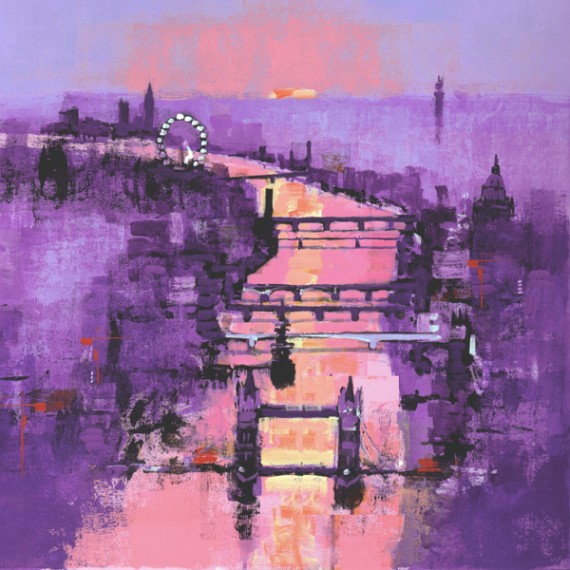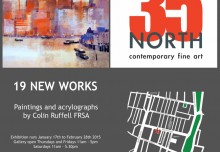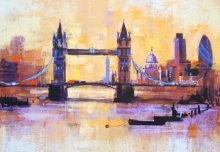Oleographs, Monoprints, and Acrylographs.
Oleographs, Monoprints, and Acrylographs are categories of art prints rather than techniques that artists use to make prints such as etching or screen printing.
Oleographs, also known as Chromolithographs, are an old way of making prints extraordinary by enhancing. Traditionally the term ‘Oleograph’ referred to lithograph prints overpainted in oil paint to recreate the look of oil paintings. It is a process that meant that our grandparents could hang pictures on their walls that looked like originals. These pictures didn’t need glass so they could confuse the unwary buyer and trickery sometimes occurred. They are still around in antique shops and auction houses.
Monoprints are a category of art prints made by an artist using a variety of printmaking techniques like etching, lithography, woodcuts, or screen prints but crucially every print is different because somewhere in the process the artist introduces unique elements. No two prints are the same even if they use a basic printmaking method.
Acrylographs are another new way for artists to make extraordinary artworks.
Modern technology enables artists to make archival giclee prints. Giclee is a technique. When the artist combines giclee print technology with acrylic over painting they are creating Acrylographs. The resulting Monoprint artworks are somewhere between prints and originals.
Less expensive than originals, yet still unique, looking like originals, with texture and highlights.

River Thames Sunset new version
There is a three stage process to making acrylographs.
- Stage One. The artists first paints an original artwork.
- Stage Two. The artwork is scanned or photographed to make a digital file. The image can then be tweaked and changed using computer software. A print file is proofed to make a signed and numbered giclee edition. The digital file can be saved and size versions created for future use.
- Stage Three. A single print on canvas is printed and stretched. The print is then over-painted with new features, colour, highlights, and texture to make a new unique artwork.
The whole process should be undertaken by the original artist. However, if an artist cannot complete the entire creative sequence it should be declared how much was done by others. Examples of collaborative efforts might be in the digital or printing stages.
The really exciting feature of the new acrylograph process is what comes next!
After an artist has painted a picture in the normal way, whatever that is, then he or she can produce a digital file which can be tweaked digitally, and then the artist can make a print onto paper or canvas. Then the artist over-paints the print to create a unique new version of the image. That is the three stage acrylograph.
But now, the new acrylograph itself can be scanned or photographed to create a new different digital file, which can also be tweaked, printed, and over-painted creating another new different image.
The artists first vision will be captured, developed, and expanded into new areas with different focuses. Over time an artist can explore a much fuller potential for their original creation. Several new pictures can evolve from one original vision.
And there is a further massive benefit!
The new unique artworks that this process enables can be quicker and less expensive than the old process of starting from scratch with a blank white canvas every time.
This also benefits the collector because the quicker cheaper way of making new unique artwork can be much more affordable.
However there is the problem?
The new process is unknown, not understood, and is not traditional.
The memory of Oleograph confusion might muddy the water.
The resistance from traditional printmakers to giclee ‘reproductions’ is ongoing.
Therefore many artists, dealers, institutions, critics, and art lovers will resist the innovation.
The pioneering artist could fight an uphill battle to overcome this prejudice.
On the other hand these pioneers will occupy untrodden virgin-green pastures.
We live in interesting times.




